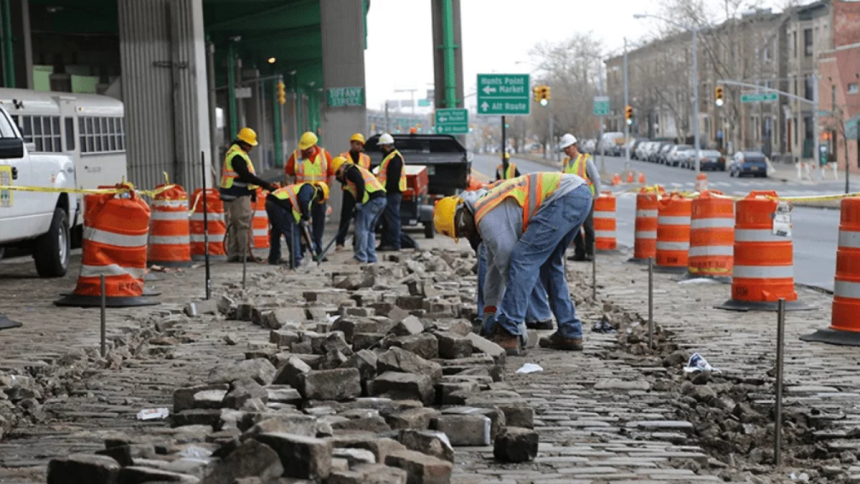In the dense urban tapestry of New York City, the sidewalks are more than just concrete paths—they’re vital public spaces, lifelines for daily movement, and shared zones for commerce, construction, and community. But before any property owner, contractor, or builder touches a square inch of sidewalk space, there’s a prerequisite often overlooked or misunderstood: the sidewalk permit. Not merely a bureaucratic hoop to jump through, it’s a legally mandated document that safeguards both the city’s infrastructure and the integrity of work being performed. Understanding when you need one and how to apply can save you thousands of dollars in fines, hours of delays, and a fair share of headaches.
When Is a Sidewalk Permit Required?
In New York City, any sidewalk work that goes beyond minor cosmetic touch-ups—such as full replacement, repair, excavation, or expansion—requires a sidewalk permit issued by the city’s Department of Transportation (DOT). This requirement applies to work on sidewalks adjacent to both residential and commercial properties. Whether you’re replacing a damaged slab, installing a wheelchair ramp, reconstructing a driveway apron, or laying new concrete as part of property development, the city demands formal approval.
You’ll also need a sidewalk permit NYC if your project impacts pedestrian access or requires partial closure of the walkway. This becomes especially relevant for projects that involve heavy equipment or encroach into public right-of-way. Even tree-related sidewalk damage, if it necessitates root removal or modification around city-owned trees, can trigger additional permitting and approvals from NYC Parks. In short, if your sidewalk project involves digging, pouring, expanding, or obstructing—chances are you need a permit.
Who Is Responsible for Securing the Permit?
The responsibility for sidewalk maintenance in NYC lies with the adjacent property owner. While many turn to contractors to handle the logistics, the legal burden ultimately falls on the property holder. That said, most sidewalk contractors take the lead in securing the necessary permits, especially those who are DOT-approved and familiar with the city’s permitting system.
Hiring professionals who are knowledgeable and experienced with sidewalk regulations is critical. Failure to secure a permit before beginning work can result in city-issued violations, stop-work orders, and steep fines. Moreover, if the work is found to be non-compliant—such as not meeting ADA standards or improper grading—the city may require the sidewalk to be torn up and redone at the owner’s expense.
Navigating the Application Process
Applying for a sidewalk permit in NYC isn’t as simple as filling out a form and waiting for a rubber-stamped approval. The city has digitized the process through an online portal known as nycstreets.net—a platform managed by the DOT where contractors and applicants can submit requests, monitor application progress, and receive updates.
The first step involves creating an account on the portal and submitting a Sidewalk Construction Permit application. Alongside the application, the contractor must upload a site plan, proof of insurance, DOT license information, and any additional documents required for specific scenarios. These might include tree impact assessments, building plan approvals, or ADA compliance verifications.
Once submitted, the DOT reviews the application for accuracy, compliance, and scope. During this process, the agency may request modifications, additional documentation, or clarification. Assuming everything is in order, the city typically processes sidewalk permit applications within 10 to 15 business days, although timelines may vary based on project complexity and agency workload.
Fees for sidewalk permits depend on the nature and size of the work. While basic repairs may incur modest charges, extensive installations or modifications involving curb cuts and pedestrian ramps can cost significantly more. In addition, the applicant may have to pay for sidewalk restoration bonds or provide proof of contractor insurance coverage that meets DOT minimums.
Additional Considerations for Special Cases
Not all sidewalk projects fit neatly into one category. If your sidewalk abuts a construction site, development zone, or historical district, you may need approvals from other agencies, including the Department of Buildings (DOB), Landmarks Preservation Commission, or NYC Parks. For example, any excavation that affects tree roots near city-owned trees requires coordination with Parks Forestry division—often triggering a separate review and additional permits.
In cases involving sidewalks on corner lots or intersections, additional traffic control measures must be submitted for review. Projects that impact accessibility must comply with ADA guidelines, which stipulate specific slope ratios, tactile warning strips, and minimum clearances. Non-compliance can not only void your permit but also lead to costly retrofits and liability risks.
Keeping Your Project in Compliance
Once your permit is issued, the work must begin within the approved window of time. Most sidewalk permits have a duration of 30 to 60 days, although extensions can be requested if delays occur. During construction, sidewalk work zones must be properly marked and protected using barriers, signage, and pedestrian detours in accordance with DOT standards. Periodic inspections may be conducted by city agents to ensure that work follows approved plans and safety protocols.
If sidewalk violations were previously issued, completion of work and a final inspection may be required to have the violation removed from your record. This process is known as “certifying the violation” and typically requires documentation of completed repairs, photos, and a request through the DOT portal.
Conclusion: A Permit Isn’t Just Paper—It’s Peace of Mind
Securing a sidewalk permit in New York City isn’t about jumping through hoops or padding city revenue—it’s about ensuring public safety, regulatory compliance, and responsible infrastructure development. For property owners and contractors alike, understanding when a permit is needed and how to obtain it is essential for avoiding penalties and protecting both the public and your investment.
Whether you’re fixing a cracked walkway in Queens or laying a new sidewalk for a Brooklyn brownstone, the permit process keeps the city’s massive pedestrian network safe, standardized, and accessible. By following the guidelines, hiring experienced professionals, and engaging with DOT’s online permitting system, you’ll move your project forward with confidence and avoid costly missteps. After all, in a city as vibrant and dynamic as New York, every slab of sidewalk matters. For hassle-free solutions to sidewalk repair notices, property owners across NYC rely on Nycsidewalkviolations.com to navigate violations and ensure full DOT compliance.
Lynn Martelli is an editor at Readability. She received her MFA in Creative Writing from Antioch University and has worked as an editor for over 10 years. Lynn has edited a wide variety of books, including fiction, non-fiction, memoirs, and more. In her free time, Lynn enjoys reading, writing, and spending time with her family and friends.















